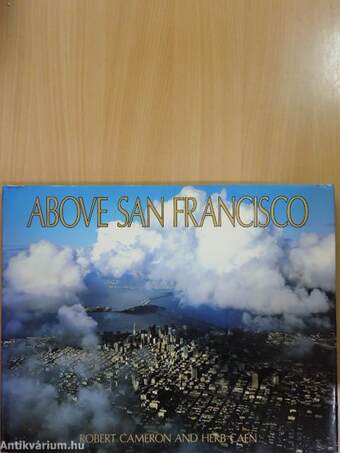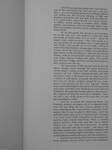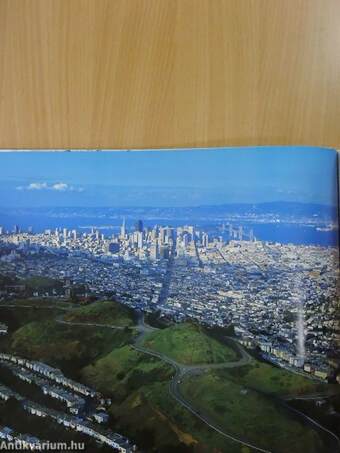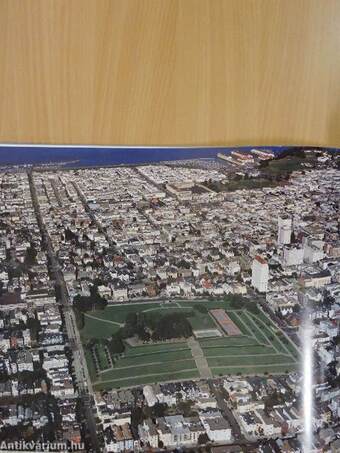1.062.411
kiadvánnyal nyújtjuk Magyarország legnagyobb antikvár könyv-kínálatát

VISSZA
A TETEJÉRE
JAVASLATOKÉszre-
vételek
Above San Francisco
A new collection of nostalgic and contemporary aerial photographs of the Bay Area
| Kiadó: | Cameron and Company |
|---|---|
| Kiadás helye: | California |
| Kiadás éve: | |
| Kötés típusa: | Vászon |
| Oldalszám: | 157 oldal |
| Sorozatcím: | |
| Kötetszám: | |
| Nyelv: | Angol |
| Méret: | 29 cm x 35 cm |
| ISBN: | 0-918684-28-5 |
| Megjegyzés: | Színes fotókkal gazdagon illusztrálva. |
naponta értesítjük a beérkező friss
kiadványokról
naponta értesítjük a beérkező friss
kiadványokról
Fülszöveg
Of all the great picture-bookcities, San Francisco may be the most tantalizing. Now you see it, now you don't - an ever-changing panorama of shifting patterns and drifting fog, the dizzying interplay of light and shadows among the hills that both exalt and obstruct. It is a peek-a-boo, hide-and-seek city, forever elusive, its endless secrets lurking in nameless alleys, hidden gardens and pathways that lead through stately corridors of eucalyptus and then vanish somewhere into the misty Pacific. It's an odd quality, this pervasive air of mystery, for on the face of it, San Francisco seems the most accessible of world cities. It is so small - about 49 square miles, seven by seven - that I once wrote, in a not uncommon fit of hyperbole, that I could stand on Twin Peaks "and cup the city in my hands." And so it seems from that dramatic vantage point. On the surface, at least, all of San Francisco is visible, from the downtown towers to the shrinking sea; from the fiat Mission District,... TovábbFülszöveg
Of all the great picture-bookcities, San Francisco may be the most tantalizing. Now you see it, now you don't - an ever-changing panorama of shifting patterns and drifting fog, the dizzying interplay of light and shadows among the hills that both exalt and obstruct. It is a peek-a-boo, hide-and-seek city, forever elusive, its endless secrets lurking in nameless alleys, hidden gardens and pathways that lead through stately corridors of eucalyptus and then vanish somewhere into the misty Pacific. It's an odd quality, this pervasive air of mystery, for on the face of it, San Francisco seems the most accessible of world cities. It is so small - about 49 square miles, seven by seven - that I once wrote, in a not uncommon fit of hyperbole, that I could stand on Twin Peaks "and cup the city in my hands." And so it seems from that dramatic vantage point. On the surface, at least, all of San Francisco is visible, from the downtown towers to the shrinking sea; from the fiat Mission District, with its church towers and palm trees, to the even flatter Marina, fringed with yachts. The world's most dramatic bridges are there, arching their backs as they spring across the bay. The thousands of little houses built by the late Henry Doelger march through the Sunset District to Ocean Beach. Colden Gate Park, another man-made creation (all hail, William Hammond Hall and John McLaren), covers a thousand acres of what was once a Sahara of sand dunes; alongside, the Richmond District turns its old bay windows toward the sun, sometimes a vain gesture, for this is the "fog beit." Markét Street slashing through the downtown from its launching pad at the venerable Ferry Building (our most beloved landmark), the park-like Presidio green in the distance, the elegance of Nob Hill and Crace Cathedral- these are only a few of the facets of this gem-like city that are immediately visible. And yet, to pursue the tantalizing theme, San Francisco remains an enigma, for all its apparent openness. For one thing, the past is forever getting in the way, cluttering up the vision and the visionaries. In few young cities (it was founded in 1850) does a short but turbulant history play such an importantrole. Nostalgia is as much a part of the atmosphere as the pearly fog, painting halos around streetlamps. There is cónstant tension between those who want the city to remain what it was - the "Little San Franciscans," to whom small is beautiful and old is sacred - and what I call the manic-progressives, who scoff at the yesterdays and think only of building higher and faster. And if a treasured landmark stands in the way, call in the bulldozers. It is hard not to think of San Francisco in feminine terms, perhaps, because of her curves and undulations VisszaTémakörök
- Idegennyelv > Idegennyelvű könyvek > Angol > Művészetek > Fotóművészet
- Művészetek > Fotóművészet > Albumok > Külföldi
- Művészetek > Fotóművészet > Albumok > Tematikus
- Művészetek > Fotóművészet > Idegen nyelv > Angol
- Művészetek > Fotóművészet > Témái > Városok > Külföldi
Megvásárolható példányok
Nincs megvásárolható példány
A könyv összes megrendelhető példánya elfogyott. Ha kívánja, előjegyezheti a könyvet, és amint a könyv egy újabb példánya elérhető lesz, értesítjük.









